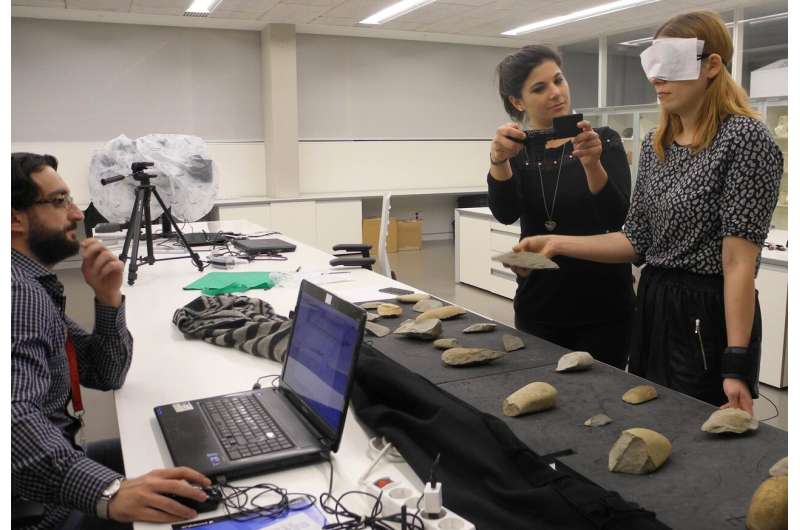Study of emotional response to the interaction between hand and stone tool

The paleoneurology team at the CENIEH has just published a cognitive archaeology paper on emotion and attention when handling Lower Paleolithic tools, in which around 50 volunteers participated
Electrodermography is the study of the variations in the electrical conductivity of the skin associated with fluctuations in emotion and attention. This technique is applied in lie detectors, and even in neuromarketing, to learn the responses of individuals or groups to commercial stimuli.
The Paleoneurology group at the Centro Nacional de Investigación sobre la Evolución Humana (CENIEH), led by Emiliano Bruner, has undertaken an investigation of the variations in these physiological responses during manual exploration of Lower Paleolithic tools, particularly for choppers and handaxes, two of the types of stone tools most used in this period.
This is an experimental study published in the journal American Journal of Human Biology, in which approximately 50 adult subjects without prior knowledge of archaeology took part. The researchers sought to test and quantify the variations in the levels of emotion and attention of the perceptual experience between hand and tool.
According to the authors, on average, women present higher and more variable peaks in response than men, and choppers prompt an emotional reaction rather stronger than do handaxes. In both cases, certain measures of the tools (especially the weight and the thickness) influence the emotional responses.
A mental process
In recent years, the cognitive sciences are opting for theories that interpret technology as part of the mental process more than as a product of the brain. In fact, the regions of the cerebral cortex involved in brain-body-object integration are particularly developed in the primates, and above all in humans.
"Studying the emotional reactions to the hand-object interaction can thus tell us of variations in the perception, which are associated with changes in the influence of utensils upon our psychological organization and behavior," says Bruner.
This paper, entitled "Electrodermal activity during Lower Paleolithic stone tool handling," has been coordinated by Annapaola Fedato, with the collaboration of the Experimental Archaeology Center (CAREX) at Atapuerca, and the neuromarketing company Sociograph, based in Valladolid.
More information: Annapaola Fedato et al. Electrodermal activity during Lower Paleolithic stone tool handling, American Journal of Human Biology (2019). DOI: 10.1002/ajhb.23279
Journal information: American Journal of Human Biology
Provided by CENIEH



















